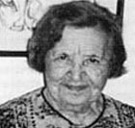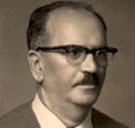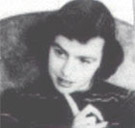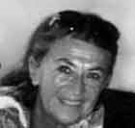
Phina Korovski
"Finally they brought us to Pietrasze field, a big group of Ukrainian hooligans forced us to run to a field, they tortured us, and beat us mercilessly… took off boots from the dead people. They pierced the women with spears; many choked from the oppressive and dense condition. If one person fell then the entire group collapsed on the person, and tanks surrounded us. It was impossible to escape. […] The next day the murderous Nazis gathered all the small children in one spot, and whoever ran back to their parents was caught by his neck with a hooked pole and thrown to the ground… the screams of the children and their mothers still echo in my mind. They ran the children like a flock of sheep back to the ghetto, and kept them there for two weeks."
Phina Korovski (Bialystok Jew)

Hadassah Sprung-Levkowitz
"Before the final action , the authorities demanded that we supply one thousand two hundred children. I collected children from orphanages and other places, and we traveled together with them, fifteen nurses and myself. […] We received sacks of bread from the Judenrat as provisions for the journey. I said to the children: If the train travels northwards, jump off and try to run away. If it travels westwards, stay. The train traveled to the west. During the journey, I gave the German guards money and valuables in exchange for hot water. The train arrived at Teresienstadt and the children entered the camp, but the Germans refused to accept the small child and she remained with me. We adults were sent back to the train, and it was then that the conductor said to me: you are going to Auschwitz. […] In Auschwitz, I worked in the camp office and was able to see the list of names of persons who were arriving. One day, a transport arrived with "our children". They were all led to the crematoria".
Hadassah Sprung-Levkowitz (a Jewish nurse traveling with the children on the train)
“They led us to the railway station where there was a special train waiting. We got on, they handed out the bread for everybody and the train moved. After two days of journey we arrived in Theresienstadt [Terezin]. There the children stayed in the carriages. The adults were moved to a different train supposedly to prepare a camp for the children. We were taken to Oswiecim.”
Hadassah Sprung-Levkowitz (a Jewish nurse traveling with the children on the train)

Tobias Citron

Charlotte Opfermann
"We didn’t know exactly how many children there were. It was impossible to count them because of the chaos around and the children’s cries and despair. Finally, we managed to put 30-40 children in each room (of the school). The were laid down on hospital sheets, mattresses and anything else at hand. […] With the help of my co-workers we organized something to drink and some bowls with warm porridge. The older children helped us to feed the younger ones.”
Tobias Citron (a doctor taking care of the children in the school in Bialystok)
At some point an order arrived to put the children in pairs, the older children were supposed to take care of the younger. Thus formed group set off towards the railway station ‘Polesie’. The adults didn’t help the children, they were walking separately. At the end of the transport there were a few primitive horse carts with the smallest children, and the whole group was surrounded by the Ukrainian-Byelorussian police guards. The children were given a few stale loaves of bread for the trip. Nobody cared about anything to drink for the children, not even water, and the August that year was very hot.”
Tobias Citron (a doctor taking care of the children in the school in Bialystok)
"When he was after an operation (Mr. Tabak, a member of Sonderkommando in Birkenau), in secret he told me that on the eve of Yom Kippur in 1943, the biggest Jewish holiday, arrived a children’s transport at the crematorium, with no adults. All of the children were taken straight to the gas chamber and then burnt on a field near the crematorium. This fact became a huge burden to all who knew about it.”
Tobias Citron (a doctor taking care of the children in the school in Bialystok)
“When they reached the bathing place, the bigger children didn’t want to go to the shower room and pushed the weaker so that they checked the showers. However, after checking them and finding that they were safe, they agreed to be washed. In time, they became more trustful and whispered the stories from before a few days when Germans gathered all Jews in one market square and after a while randomly shot them dead. The few who supposedly survived, were locked in a building called ‘Bath House’ and gassed there. The children described other horrible things and only then we could understand the reasons for their deathly terror.”
Dr. Karl Loesten-Levenstein (a doctor in Theresienstadt ghetto)

Hanna Greenfield
“Prior to the children’s arrival, there was a great deal of rushed work done outside the walls of the Ghetto, in a place called Kreta. A special group of male inmates, constantly accompanied by 55 guards, was putting up wooden barracks for an unknown purpose.
With the Ghetto under strict curfew, the best doctors and nurses were picked out from among the inmates of Terezin, all those chosen having worked until then with children of the Ghetto in some capacity. They were rounded up and taken outside of the Ghetto walls to the newly erected barracks, to meet these strange children — that had arrived no one knew from where.”
Hanna Greenfield (a Jew from Theresienstadt ghetto)






